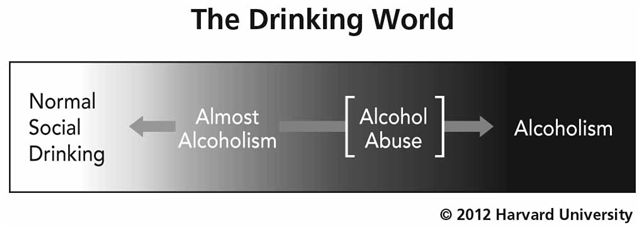
What You Don't Know Can Hurt You
The United States Preventive Services Task Force, a government-appointed independent panel of experts, just issued a report and an advisory that all sensible men and women would do well to take heed of. This panel reviewed a large body of research on drinking patterns among adult men and women. Their report focuses not on the relatively small percentage of people whose drinking is so severe that it qualifies them for a formal diagnosis of alcohol abuse or alcoholism; rather, it took aim at those men and women who are neither abusers nor alcoholics but who nevertheless drink more than the limits recommended by the National Institute on Alcohol Abuse and Alcoholism. Those limits are as follows:
• For men, a maximum of 14 drinks per week and 4 drinks on any one day.
• For women, a maximum of 7 drinks per week and 3 drinks on any one day.
Drinking in excess of the above does not make an individual an alcoholic. By the same token it makes them more than an occasional or "social" drinker. In terms of what I call the drinking spectrum this group falls somewhere in the "almost alcoholic" zone as depicted in the following diagram:
There are probably millions of men and women in the almost alcoholic zone. Many of them, if confronted with the above drinking guidelines, might nod. But when asked to estimate just how many drinks they actually consume in any given week, these same men and women may be shocked to realize that they do indeed exceed the recommended limits. Of this group quite a few will argue that the recommended limits are either unreasonable, or at the very least outdated.
Obvious vs. Subtle Consequences
People may feel that the recommended limits are unreasonable or outdated for one obvious reason: They don't see any connection between their own drinking behavior and any physical or emotional consequences. In a word, they feel safe. But is this true?
According to Susan Curry, a member of the panel that issued the above report, it was designed in part to help people who do drink above the limits to avoid moving farther along the drinking spectrum into actual abuse or even alcoholism, at which point consequences become obvious. According to Dr. Curry, "This says, 'Let's pay attention' ... You may want to take a look at how you are drinking. If it escalates you're at risk, but you can change that now."
Drinking at the almost alcoholic level is not risk-free. There are consequences. The problem is that people don't move along the drinking spectrum quickly; consequently, the consequences of their drinking typically appear insidiously, often over a period of years. These consequences can be more subtle than obvious. They may begin with disturbed sleep and a progressive loss of energy and stamina. This may lead to a low grade depression, or early signs of medical problems such as hypertension or diabetes. Drinking at the almost alcoholic level is also associated with increased risk for breast and esophageal cancers. Of course, it may take years for these cancers to be diagnosed, and the victims may not "connect the dots" between their eventual illness and their drinking.
"Shifting Left"
The good news that Dr. Curry and the panel had to share is that, for all those men and women who look at their drinking and realize that they have drifted into the "almost alcoholic" zone, solutions are available. They do not necessarily need to abstain. Rather, they can avail themselves of a number of strategies designed to help them "shift left" on the drinking spectrum, back toward normal social drinking, where the risks are much lower.
The panel reported that professional counseling can help men and women who are in the almost alcoholic zone to reduce their drinking. For those who would prefer to try their hand at self-help before considering counseling, a guide for assessing where they lie on the drinking spectrum, along with solutions for "shifting left" can be found in Almost Alcoholic: Is My (or My Loved One's) Drinking a Problem?.
For more by Joseph Nowinski, Ph.D., click here.
For more on addiction and recovery, click here.
